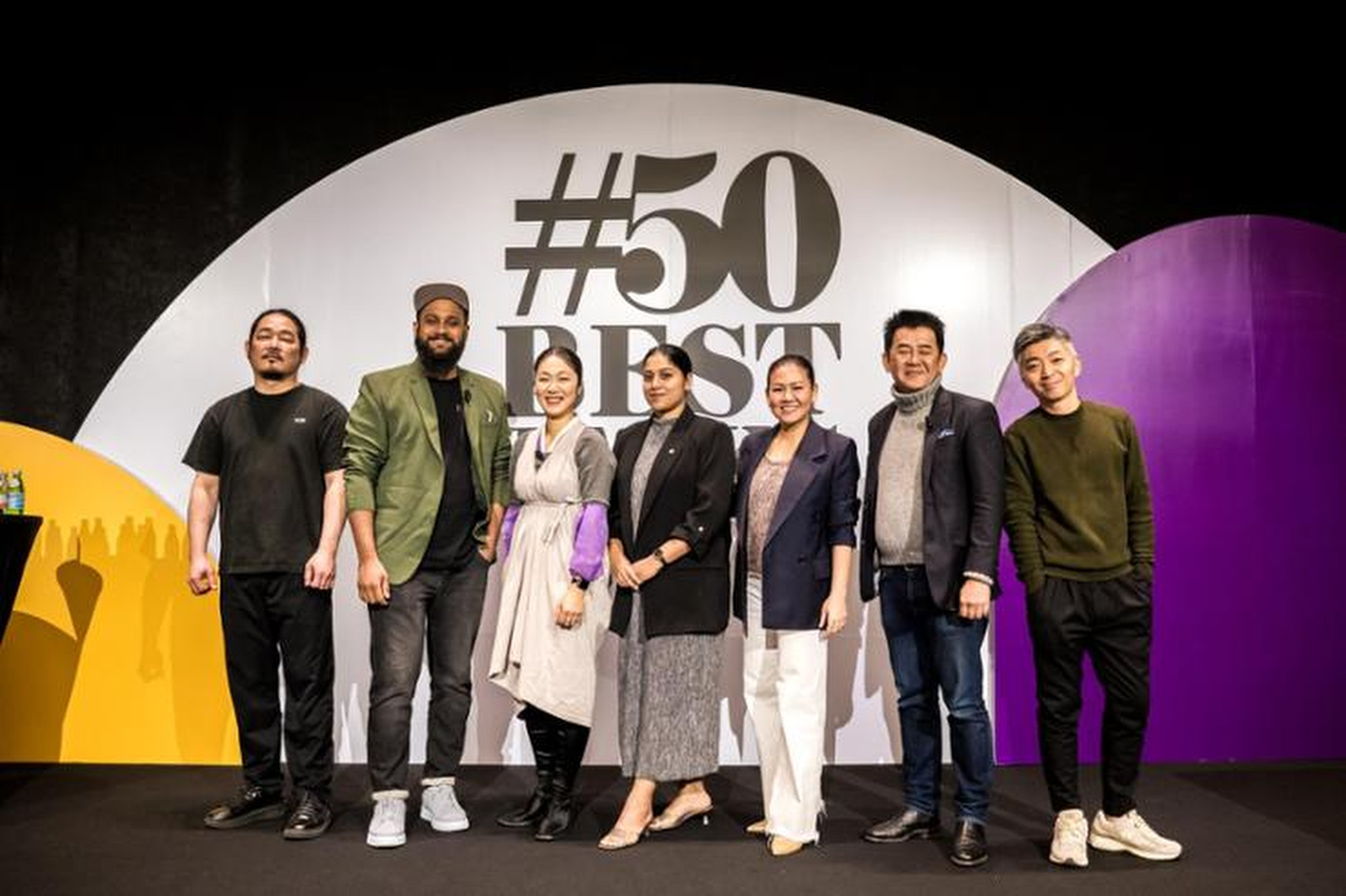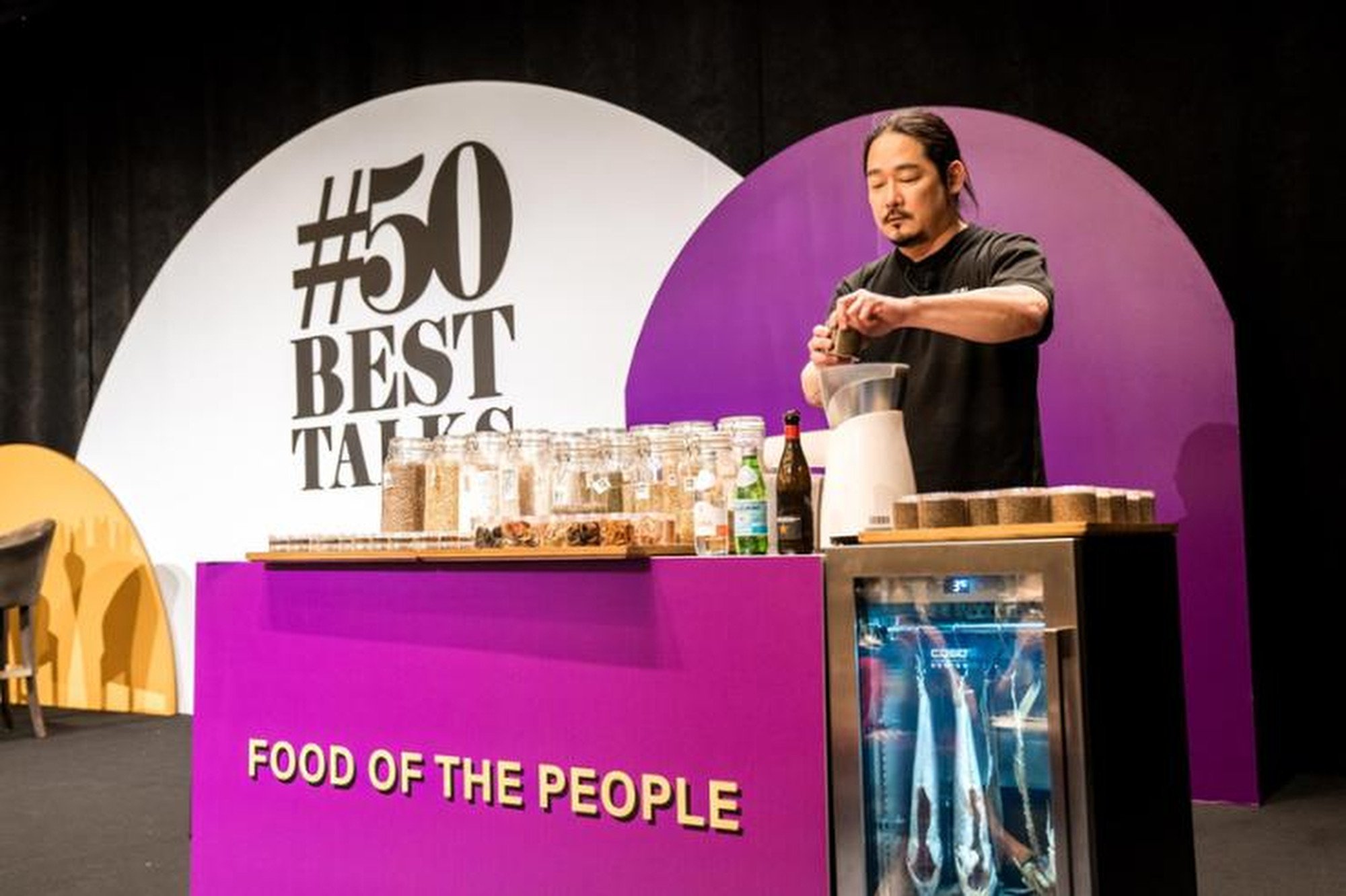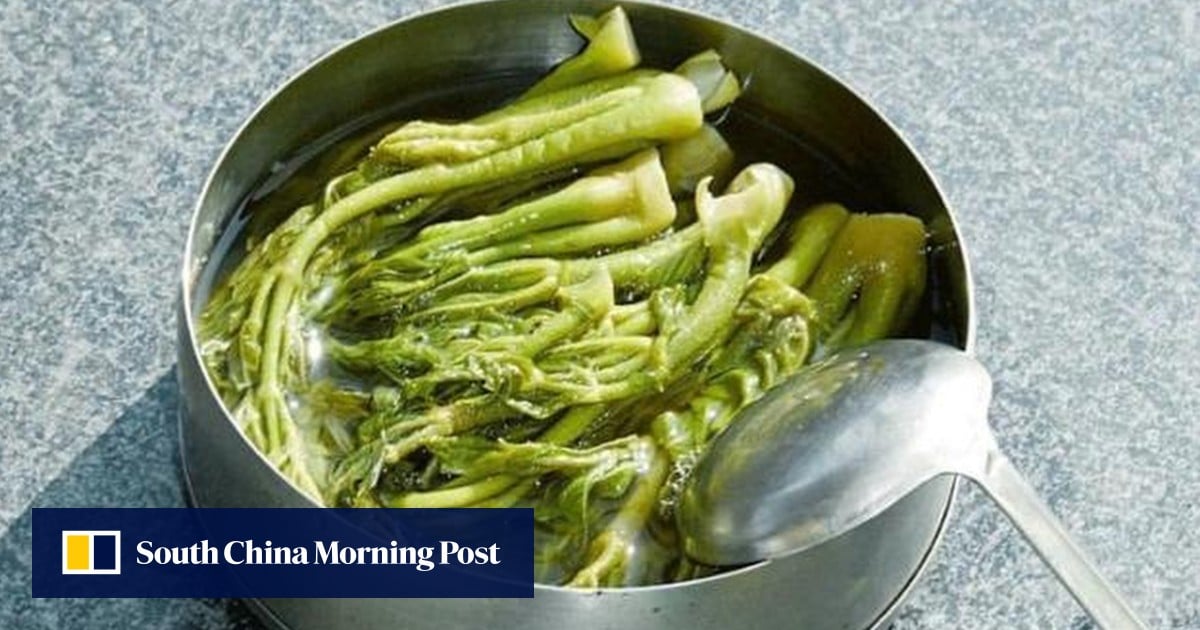Ha has travelled across the country, covering some 620,000 kilometres (385,000 miles) since 2014, meeting local people and recording the undocumented oral recipes of the communities she encounters.
She highlighted the vast array of kimchi varieties in Korea, emphasising their regional and seasonal diversity, telling stories of corn kimchi, summer kimchi infused with corn water, subicho kimchi featuring a specific Korean chilli pepper, and dureup kimchi made with Angelica tree shoots.
Apart from documenting spoken recipes across the country, Ha also holds workshops and promotes seasonal produce in partnership with local farmers.
“The reason for recording is not only to tell the stories of the past, but also to show that they are still delicious today. Ordinary is the extraordinary,” Ha said.

Another “ordinary” Korean dish discussed during the session was naengmyeon, or Korean cold noodles, which is traditionally made using fermented kimchi brine. Chef Kim Do-yun of Yun Seoul shared insights into the craftsmanship behind this dish, which originates from the 18th century.
Kim recounted his journey to acquire the finest ingredients to achieve the intricate balance of flavours in this seemingly simple bowl of broth and noodles.
According to Kim, to create noodles with the right fragrance, he roasts soybeans and mung beans and adds them to whole wheat flour.
Kim added that the ingredients needed for broth are naturally dried, instead of being boiled or steamed, to enhance the flavour.

Kim believes a chef’s job is an endless endeavour. “I wanted to show this seemingly simple Korean dish is actually born out of the chef’s tremendous efforts and devotion,” he said, explaining how he makes sesame oil from some 60 different kinds of sesame seeds he collects from fields across the country.
The discussion expanded beyond Korean borders as chefs from leading restaurants across Asia shared their experiences with fermentation.
Vietnamese-American banker-turned-chef Peter Cuong Franklin, who helms Anan Saigon in Vietnam’s Ho Chi Minh City, presented how local chilli, anchovies and other ingredients are fermented to create Vietnam’s signature sauces.
In his second visit to Seoul, Franklin highlighted the parallels between the importance of fermented food such as fish sauce and pickles in Korean and Vietnamese cuisines.
“I went to the dinner yesterday and mingled with eight of the top Korean chefs. So that was very fun to really experience what’s happening in Korea. So I think a lot we can learn by exchanging with the chef and the people in Korea to see how things are done here,” Franklin said.
The world is so open to having new conversations about food, and they’re open to knowing about each other
During his stay, Franklin found that Korea’s saeujeot, or salted and fermented shrimp, is very similar to that found in Vietnam.
“This creates a sense of connection between the two cuisines,” he said.
He unveiled plans to invite Korean restaurant Evett to Vietnam for a joint pop-up.
“We will do a collaboration dinner. So [what] we will do [is] they’ll bring four dishes from Seoul and we will do our dishes and then one collaboration dish.
“We will create a menu together with wine pairing to get people in Vietnam to experience a little bit of modern Korean food. And then mixed with a little bit of modern Vietnamese food [will] give them a special experience.”
US$500,000 luxury meal in space has people flying to sign up
US$500,000 luxury meal in space has people flying to sign up
During her session, Siy introduced five fermented foods that are a fixture in Filipino dishes, from preserved pickles to fish and rice.
“I don’t think a lot of people outside the Philippines know much about [Filipino cuisine]. So it’s almost like I feel very honoured to have that opportunity to talk about the food,” Siy said.
“I actually really enjoyed today’s session. I found the sessions very enlightening, because everything is so interconnected. And we have more things in common than differences. And that came out very strongly to me.”
Japan’s best ramen? Gourmet guide ranks nation’s top 100 ramen restaurants
Japan’s best ramen? Gourmet guide ranks nation’s top 100 ramen restaurants
Hong Kong-born Richie Lin, whose restaurant Mume in Taipei pays homage to his adopted home of Taiwan, highlighted the importance of pineapple, a major ingredient and integral part of Taiwan’s agriculture, in his culinary creations, showing how he incorporates pineapples and soybeans into his fermentation processes.
The chef-mixologist duo Niyati Rao and Jishnu AJ of Ekaa, in Mumbai, India, introduced India’s rich heritage, diversity of ingredients and culinary evolution.
They presented Indian fermented drinks such as kanji, which is made with carrots, and novel uses of indigenous ingredients for fermentation in modern cuisine.
Rao said this is a great time to be a chef.
“The world is so open to having new conversations about food,” she said. “And they’re open to knowing about each other, respecting each other’s cultures and cuisines. Food is one thing that can end wars. And that will bring us so close.”







